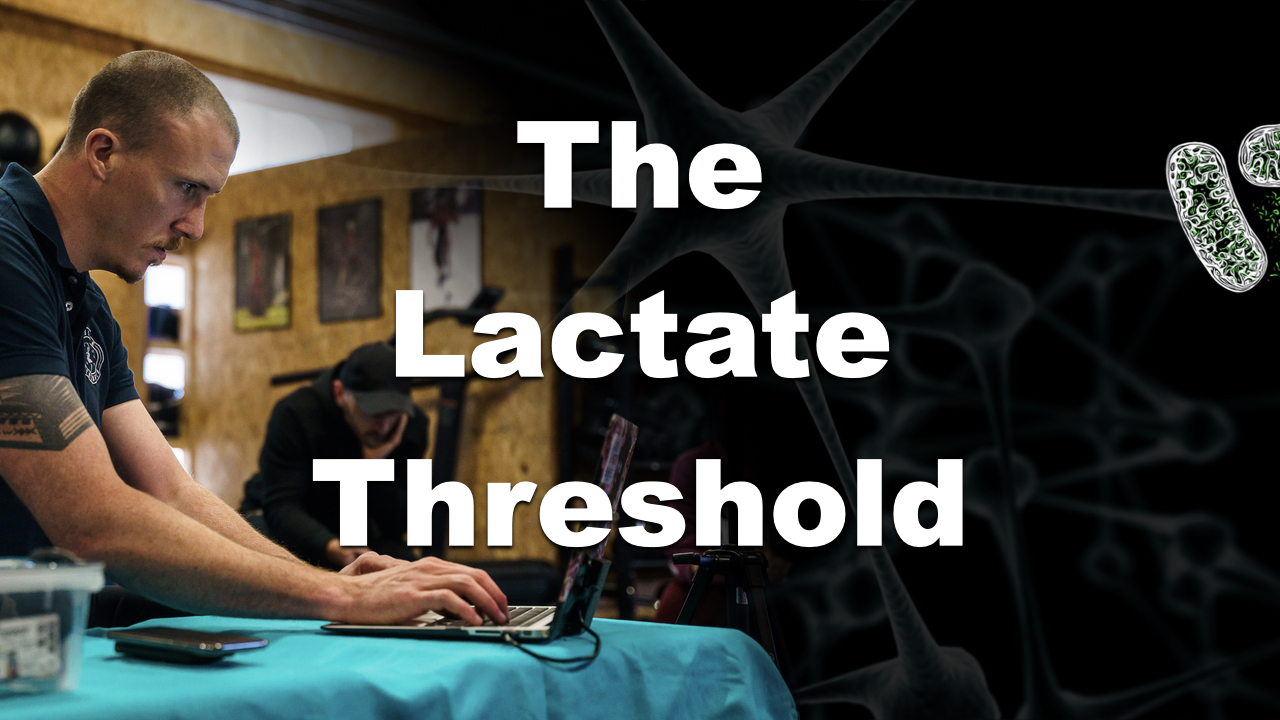As an athlete/coach, you’ve surely heard the term “Lactate Threshold” before. But can you actually define it, explain why it’s important, and tell me how to find it?
Understanding key concepts of endurance training such as the lactate threshold, vo2max, and Zone 2 training will help you stay engaged in your training as an athlete. As a coach, you will walk away with sound arguments to enhance your coaching and better structure your approach.
Defining The Term “Threshold”
In exercise physiology, a threshold refers to “the magnitude or intensity that must be exceeded for a certain reaction, phenomenon, result, or condition to occur or be manifested.” (Source: Oxford Languages). We can measure this in different ways inside the body. For example, some choose to measure ventilatory thresholds rather than lactate thresholds.
To put it simply, a threshold marks the transition between two distinct internal states. By knowing when we switch from one internal state to another, we can make better decisions about training intensity. For one thing, we can target different physiological adaptations by training in the right “zone.”
Thresholds Are Dynamic
With that in mind, we must consider the fact that physiological thresholds don’t exist at a fixed and constant power/speed/heart rate. Thresholds vary due to fatigue, hydration, temperature, nutrition status, etc… They also improve with proper training and get lower through detraining. In short, they are dynamic and we should always keep this in mind when testing or training.
Now that we understand what a threshold is, let’s spend a bit more time on the lactate threshold concept itself.
What Does Lactate Threshold Mean?
In the endurance world, the term Lactate Threshold is commonly used to refer to the heavy-severe intensity domain boundary. It is sometimes used interchangeably with the (now obsolete) anaerobic threshold.
We use intensity domains to describe distinct physiological responses to exercise. In the Moderate domain (green below), we observe a metabolic and VO2 steady state. In the Heavy domain (yellow), the steady state is maintained at the whole-body level. The VO2 response exhibits a delayed steady state (following the VO2 slow component). In the Severe domain (red), the organism can no longer maintain its internal balance. This is when we trend towards VO2 max and task failure.
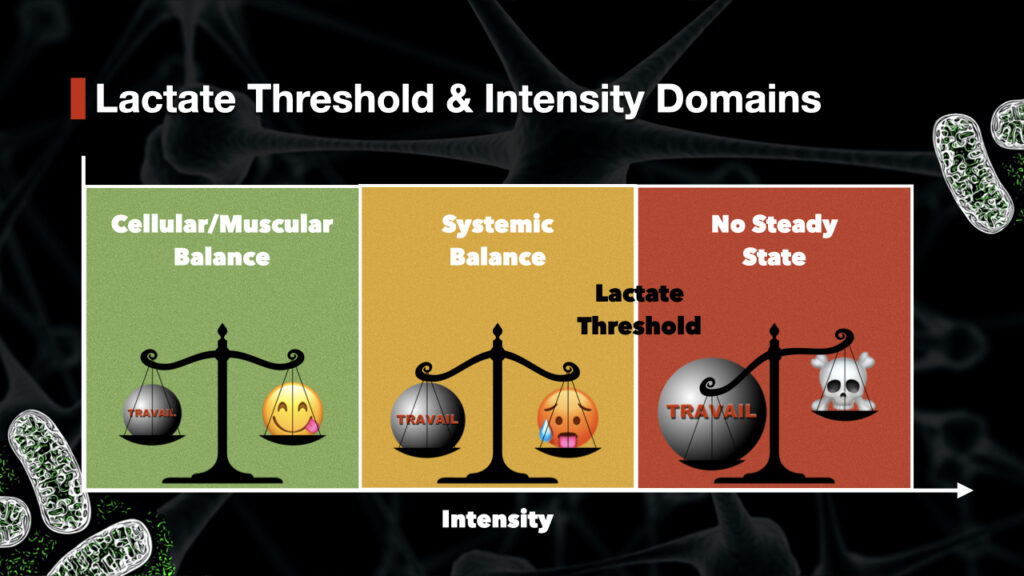
Lactate Threshold and Endurance Performance
The higher the lactate threshold, the higher percentage of VO2 the athlete can utilise while maintaining an internal steady state. We commonly refer to this as fractional utilisation of O2. In that sense, Lactate Threshold is one of the most important performance markers in endurance sports.
From a lactate standpoint, we observe a shift from elevated (but stable) blood lactate levels in the heavy domain to an exponential rise in the severe domain.
Interestingly, we can also observe the importance of this physiological parameter in non-endurance disciplines. In fact, I’ve seen significant improvements in recovery, training load tolerance, and fatigue resistance across many sports (CrossFit, MMA, and more) for athletes improving their lactate threshold.
But the lactate threshold also generates some confusion because there is actually more than one of them. Let’s look into this more closely.
How Many Lactate Thresholds Are There?
To illustrate the confusion that often exists around the lactate threshold concept, let’s look at the graph below.
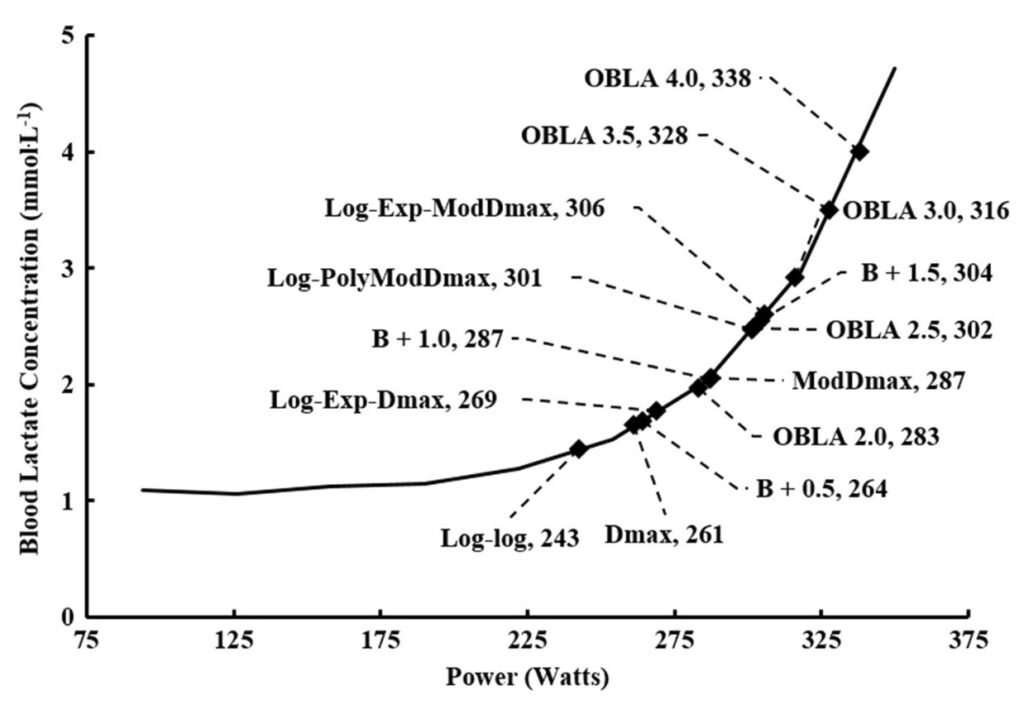
We could say that there are as many lactate thresholds as there are ways to calculate it. Each coach/physiologist has their own preferred way of interpreting the data and the debate rages on.
I personally recommend focusing on two lactate thresholds which each represent the transition between distinct internal states. Following lactate testing, we ideally express those thresholds with a power value (or speed for running) and a heart rate value as well.
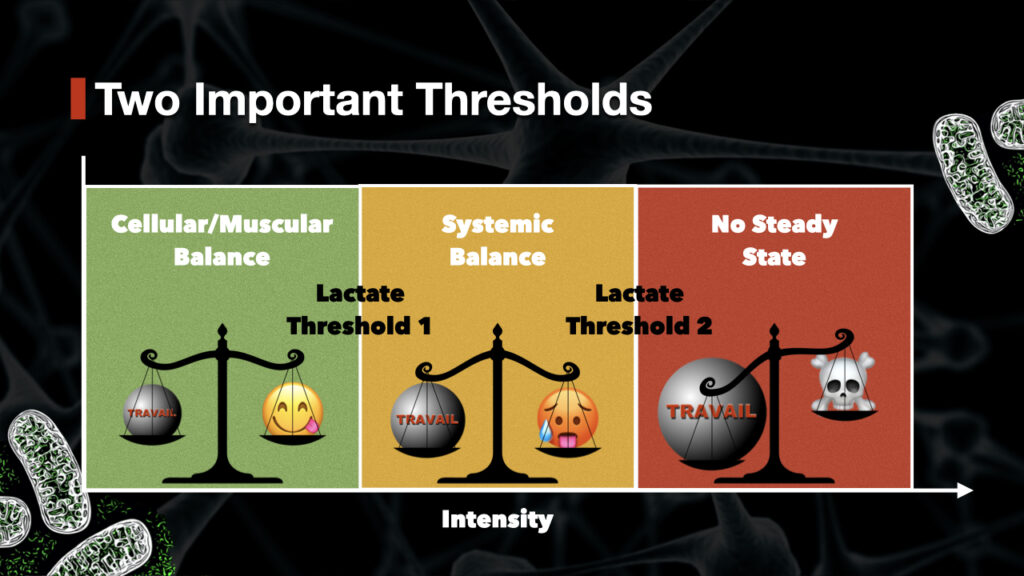
Lactate Threshold 1 – Moderate to Heavy
The first lactate threshold marks the boundary between the moderate and heavy domains. Unlike the second threshold, we need physiological data to determine this first threshold.
I personally use the Bsn+0.5 method to determine the first lactate threshold. Put simply, I place this boundary at the point where blood lactate rises 0.5 mmol/L above baseline. This is a conservative approach that I’ve had good success using with both endurance and non-endurance athletes.
If we think about RPE (rating of perceived exertion), LT1 can happen anywhere from 2 to 5/10. This makes it tough to pinpoint without the physiological data.
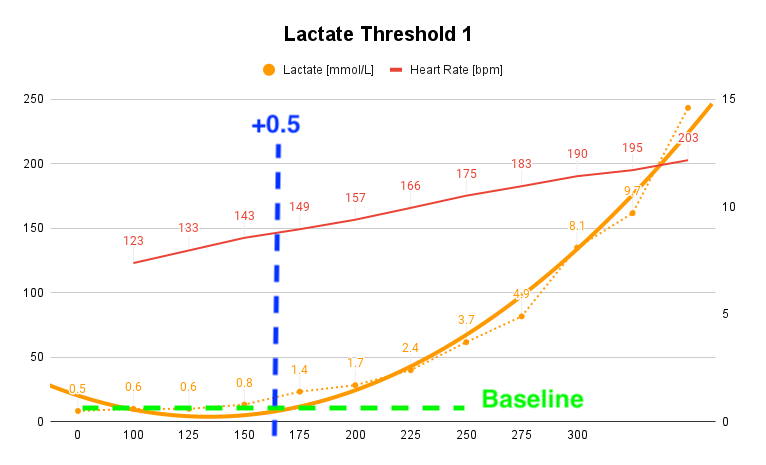
Lactate Threshold 2 – Heavy to Severe
Unlike the first threshold, we can determine the second threshold by using performance data OR physiological data. If we wish to use performance data, certain models such as critical power or critical speed are useful. We can also use a maximal effort of 40 to 60 minutes as a close estimation of the second threshold. An RPE of 8/10 is usually a good estimation as wellé.
If we decide to use lactate data instead, my preferred option is the modified Dmax method. It is fairly simple to apply and seems to have good validity when compared to other threshold determination methods. In technical terms, the ModDmax is “identified as the point on the third order polynomial curve that yielded the maximal perpendicular distance to the straight line formed by the first point preceding an increase of lactate concentration greater than 0.4 mmol·L−1 and the final lactate point.” Let’s see what this looks like on the graph below.
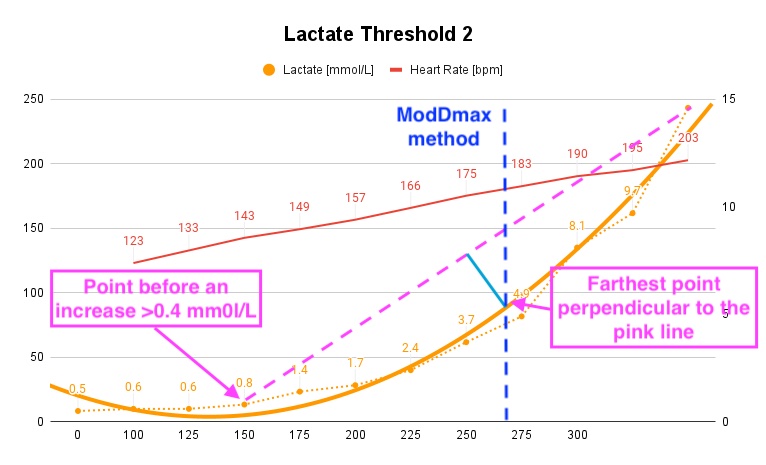
We use this method when the data collected comes from an incremental step test. We can also perform repeated efforts 30 minutes in duration in 10w increments to determine a Maximum Lactate Steady State. Some consider this approach to be more precise than the incremental test. However, testing MLSS requires more time and usually has to be done over multiple days which isn’t very practical.
Lactate Threshold Heart Rate
As we discussed in the previous sections, the heart rate we assign to each threshold should be based on physiological data collected during the test. However, I often see athletes and coaches use fixed percentages of a maximal heart rate as a marker. While this approach might work for some, it also opens the door to significant over (or under) estimations of heart rate at a given threshold.
For example, Garmin and Polar will often set the heart rate for LT1 at 70% of HRmax. From the testing data I collected so far, the HRmax percentage at LT1 can vary significantly, ranging from 55% to 75%. This is why I don’t recommend using preset percentages to determine heart rate for the lactate thresholds.
Running Lactate Threshold
The examples I gave so far were all based on power values. Those work well for cycling, rowing, and any ergometer that provides a power reading. In order to determine your Lactate threshold pace when running, you would conduct a lactate test on a treadmill or on a track. If you don’t have access to lactate testing, you can use your current 10k time trial pace as a good approximation of lactate threshold pace.
Training the Lactate Thresholds
Once you’ve successfully determined your thresholds it’s time to get to work and improve them! We will talk about lactate threshold training in our next blog.
Thanks for reading!

Author
Sean Seale – Upside Strength
Sean is a Performance Coach specializing in physiological testing for CrossFit and Endurance Sports athletes (cycling, running, triathlon, swimming, etc.). Sean also works as a consultant and trainer for gym owners, sports organizations (regional and national), and coaches wishing to deepen their knowledge or approach in this area.
